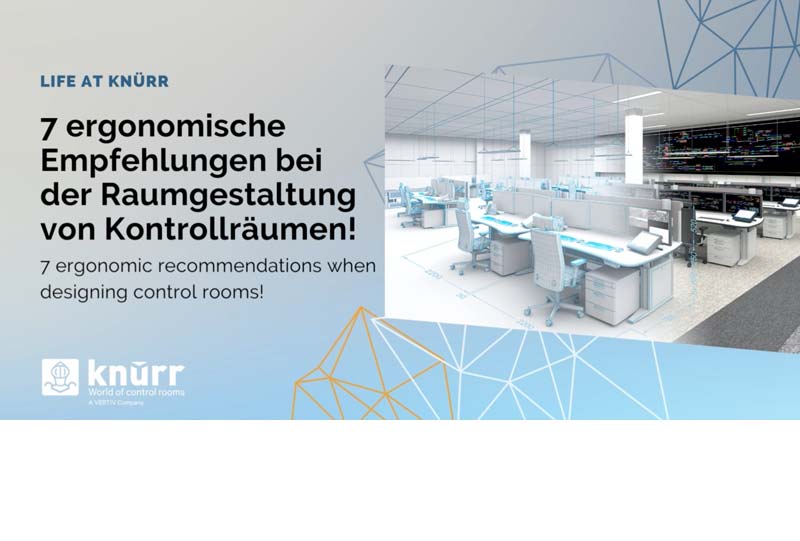25.04.2023 _
Fortunately, ergonomics in the workplace is increasingly seen as a performance factor and less as a cost factor. In the meantime, however, this term is used inflationarily and a precise differentiation should be made, at least in the professional environment. Ergonomic aspects must also be taken into account when planning critical infrastructures such as control centers in order to optimally design the interface between people and machines. Not only the nature of the respective activity and the associated demands on the operators, but also the environment-related aspects represent an important component of workplace ergonomics. This has a very strong influence on the performance of the persons concerned. The following recommendations are examples of the complex issues that arise in the design of control rooms – Tim Holzapfel, Managing Director at Knürr Consoles sums up:
• Possibilities should be created to regulate the temperature at the workplace individually, insofar as this cannot be made possible by the room’s air conditioning system. Personal temperature perception is very individual and also depends on the type of activity performed. Depending on this, a temperature range between 20°C and 26°C is recommended.
• Attention should be paid to good air quality and drafts should be avoided. For example, the German Social Accident Insurance (Spitzenverband Deutsche Gesetzliche Unfallversicherung) recommends a maximum air velocity of 0.15 m/s in such rooms (2).
• The design of the lighting should be adjustable to the respective work task and the individual vision of the operators. The relevant technical rules for workplaces specify a lighting level of at least 500 lx for this purpose, with a corresponding standard for control room design specifying 500 lx as the upper limit here (3) (4).
• The environment in the control room must be designed in such a way that the disturbing noise level is low and the reverberation time is optimal. Noise sources inside and also outside the room must be taken into account. For example, it is recommended that ambient noise levels do not exceed 45 dB(A), but also do not fall below 30 dB(A) (4).
• Vibration sources should be located as far away as possible. In the context of critical infrastructure, for example, the emergency power generator should be located at a distance from the control room and suitably structurally insulated. The effects of mechanical vibration on users and technical equipment are also addressed in standards (5).
• End users should be involved in the selection of room and workplace design. A consensus of individual opinions is particularly important when it comes to the color design of furniture and surfaces in order to ensure the best possible subsequent acceptance.
• The design of the control center desks should be chosen to allow for future expansion and adjustment of the setup. Both individual work processes and teamwork can change, and a modular workplace concept simplifies and favors this.
But why exactly 7 recommendations now? Does Miller’s number mean anything to you 😉
#KnürrConsoles #Ergonomics #DIN #Ergonomic Standards
Literature:
(1) DIN EN ISO 7730:2006-05 (2006): Ergonomics of the thermal environment, Beuth-Verlag, Berlin, 2006.
(2) DGUV Information 215-410 (2019): VDU and office workplaces, guidelines for design, Deutsche Gesetzliche Unfallversicherung e.V., Berlin, 2019.
(3) ASR A3.4 Technical Rules for Workplaces (2011): Lighting, Federal Institute for Occupational Safety and Health, Dortmund, 2022.
(4) EN ISO 11064-6:2005 (2005): Ergonomic design of control centers -part 6: Environment-related requirements for control centers, Beuth-Verlag, Berlin, 2005.
(5) DIN EN ISO 9241-6 (2001): Ergonomic requirements for office activities with visual display terminals – Part 6: Guiding principles for the working environment, Beuth-Verlag, Berlin, 2001.






